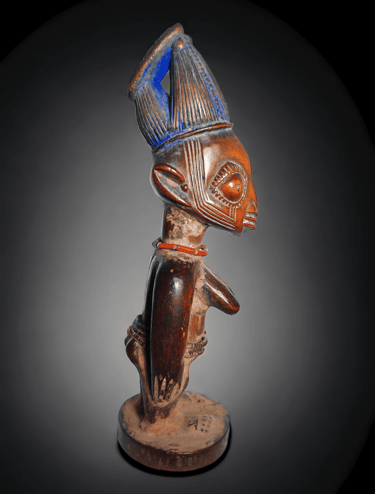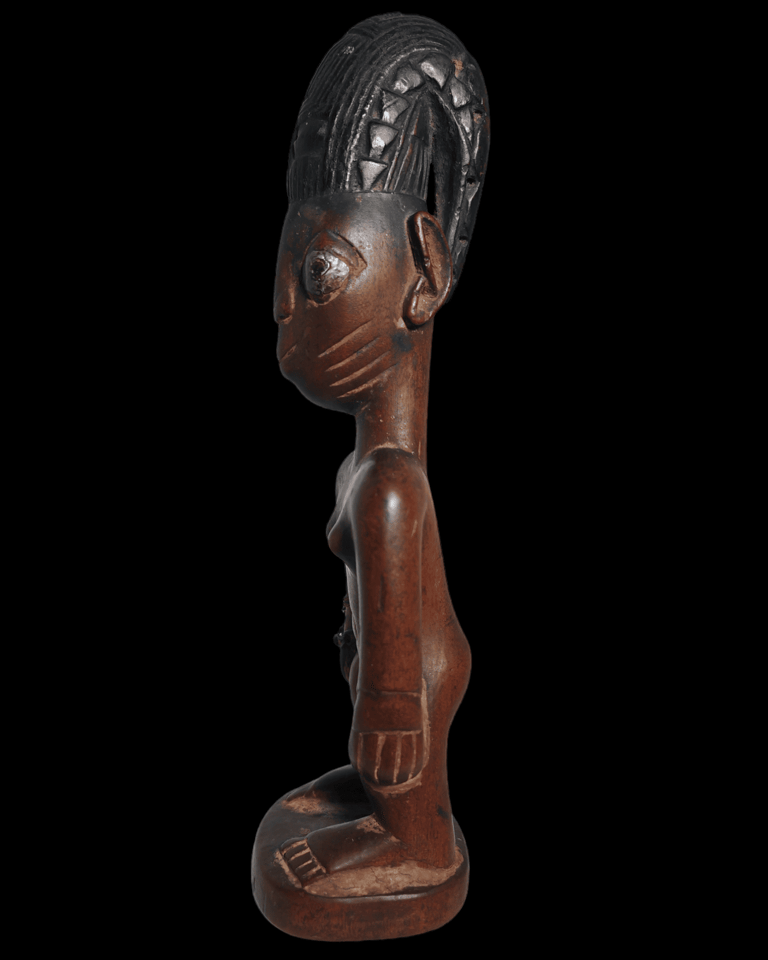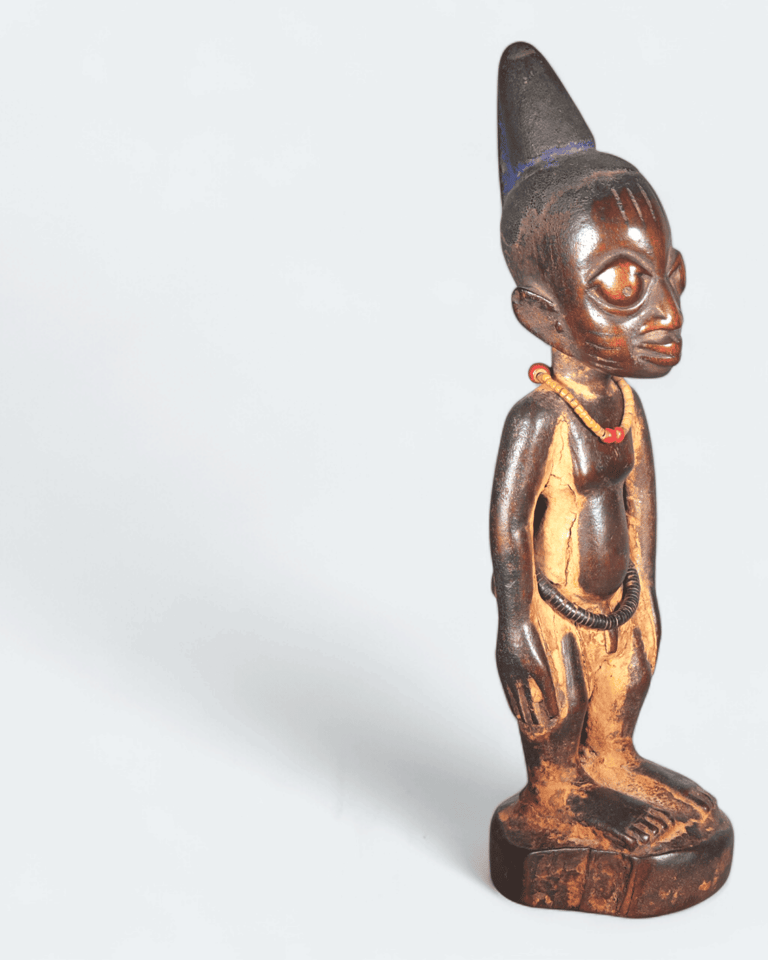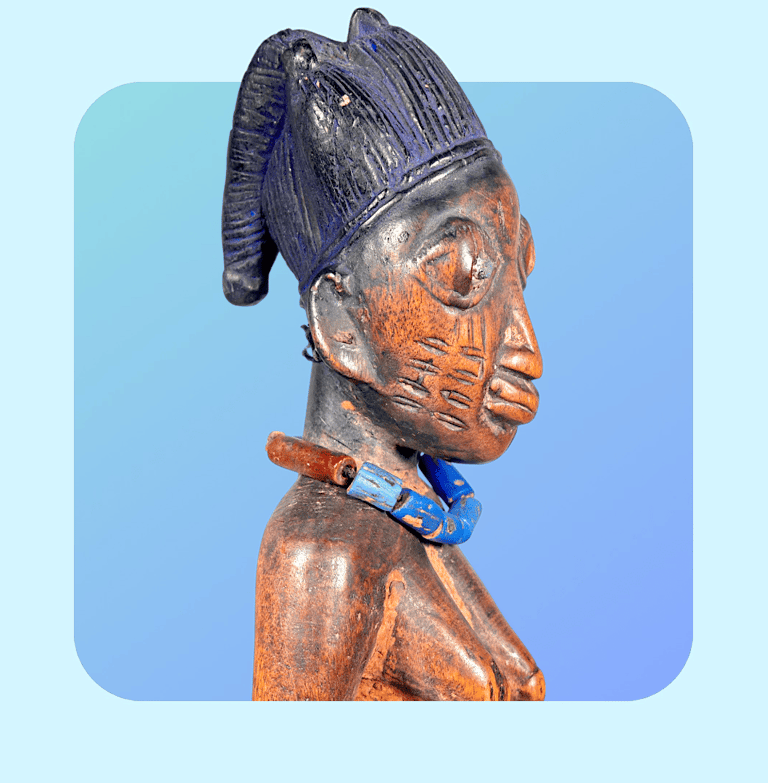Idowu Figures
in the Twin Cult


In the Yoruba language, the term for twins is ìbejì, literally meaning “born two,” while in the eastern Yoruba dialect, they are referred to as omo méjì, meaning “two children.” Additionally, the word èrè denotes a sculpted representation. The combination of these terms gives rise to the designation èrè ìbejì, which serves as the standard name for this category of sculptures within Yoruba culture.
When a pair of twins is born, they are given specific names. The first child to emerge is called Taiwo (or Taye), a name that reflects his status as the younger of the pair. According to Yoruba belief, he is sent ahead by his elder sibling to “taste the world,” the literal meaning of his name. Only after this exploratory mission is complete does the second twin, Kehinde, arrive. His name signifies this delayed entrance, occurring after the younger sibling has deemed the world safe for birth and has given the signal to emerge.
The birth of a child following a set of twins carries special significance, and this child is invariably named Idowu. Such a child is perceived as possessing a unique nature, tasked with restoring balance after the arrival of the twins. In Yoruba thought, they are often referred to as Èsù lẹhìn ìbejì, meaning “Eshu following the twins.” Èsù, the trickster deity of the Yoruba pantheon, plays a crucial role as the guardian of crossroads—places where, in the absence of his guidance, one may go astray, but where, under his direction, the right path can be chosen. Thus, in the context of twin births, the arrival of an Idowu symbolizes a return to order, reinstating familial normalcy after the extraordinary event of twin birth.




In Yoruba art, in accordance with religious prescriptions, there exist statuettes that, while bearing a striking resemblance to sculptures dedicated to ìbejì, are nevertheless distinguished by the addition of attributes specific to Èsù. These figures, associated with the child Idowu, are notably characterized by the presence of a sculpted crest at the back of the headdress, an iconographic element evoking the influence of this ambivalent deity.
The creation of these representations is not a matter of personal choice but follows a ritual injunction issued by the babalawo, the Yoruba diviner. It is through divinatory consultation that the babalawo prescribes the making of these sculptures, known as Idowu. Their function extends beyond mere representation; they are intended to restore order and harmony within the familial lineage—an order that, according to Yoruba belief, may have been temporarily disrupted or fractured by the birth of twins. Thus, these figures participate in a process of compensation and cosmological rebalancing, reflecting the central role of ritual arts in structuring both the spiritual and social worlds of the Yoruba people.


